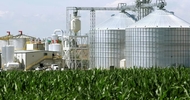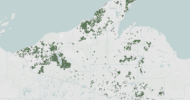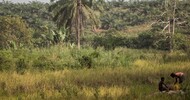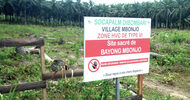After decades of conflict, land deadline looms for Myanmar villagers
by Rina Chandran
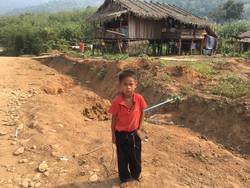
Her father was among those killed as she and other villagers fled in 1992.
Villagers were able to return only after a ceasefire was signed in 2012. By then, their village was gone, the land taken for the Tanintharyi Nature Reserve and a palm oil plantation that sprawled across about 610 acres (250 hectares).
So the villagers rebuilt their wooden homes in a clearing a short distance away. Now, they are battling to regain the land they once farmed and lived on.
"We lived in fear for 20 years not knowing if we would ever come back to our homes," said Naw Pa Eh, on the verge of tears as she described how her father was killed.
"We lost so much in the conflict. Now there is no more conflict, but we have lost our land, and we don't know if we will ever get it back."
After nearly seven decades of conflict, the Karen National Union (KNU), the oldest ethnic armed group, signed a ceasefire agreement with the Myanmar government in 2012, which allowed Naw Pa Eh and other Karen refugees to return home.
Ethnic groups continue to fight in other areas even after a national ceasefire deal in 2015, and nearly 100,000 refugees remain in camps across the border in Thailand, according to the United Nations refugee agency (UNHCR).
As refugees began to trickle back, many found their land had been taken for parks, for military use or classified as Vacant, Fallow and Virgin (VFV) land, and leased to palm oil concessions and rubber plantations.
'VERY VULNERABLE'
Following an amendment last year to the 2012 Vacant, Fallow and Virgin Land Management Law, authorities said anyone seeking to use such land must obtain a permit by March 11.
Otherwise they could be sued by the legal user of the land for trespass, with a fine of up to 500,000 kyats ($328) or two years in jail - or both.
In Kye Zu Daw, villagers who tried to farm a narrow strip of land have been sued three times under the terms of the 2012 law by the palm oil plantation, said village leader Chit Win Htoo.
Just nine villagers had so far received a VFV permit to grow betel nut and cashews on abuot 50 acres of land, he said.
"We had to visit different government departments 26 times before we could even apply for the permit," he said.
"We have been harassed, abused and intimidated by authorities, and we are competing with wealthy companies for our own land. Some villagers think they will be better off back in the refugee camp," he told the Thomson Reuters Foundation.
A spokesman in the agriculture department did not respond to calls and emails seeking comment.
Land governance in Myanmar is regulated by more than 70 laws, some dating back to the British colonial era.
Meanwhile, decades of ethnic conflict and military rule have forced hundreds of thousands of people off their land and led to evictions and confiscations, according to a Human Right Watch report in 2018.
Disputes over land have flared since the easing of political and economic restrictions began in 2011.
The reforms led to a rush of foreign investment and greater demand for land for industrial use in a country where about 70 percent of the population is reliant on agriculture.
Officially, all land belongs to the state, which grants permission to occupy or use land via a land-use certificate - but few farmers have those, particularly in ethnic areas where customary tenure is the norm.
The VFV law aimed to clarify land claims and reduce landlessness. It covers almost a third of Myanmar, mostly in states with large ethnic populations.
The KNU, which recognises customary tenure in the areas that it administers, including the Tanintharyi region, has called for scrapping the VFV law, which it says forces people to give up their rights and limits their land use to 30 years.
In a December statement, the KNU said the law "shows no concerns to the rights of indigenous people", and that it "discourages peace-building".
About 70 percent of people in the Tanintharyi region had either not registered their land, or lacked formal documents to do so, said Sa Ayar Win of the Myeik Lawyer Network, which provides pro bono services to villagers caught in land disputes.
"They are all at risk of losing their land now," he told the Thomson Reuters Foundation.
"The law leaves refugees and IDPs (Internally Displaced People) very vulnerable. Many are not even aware of the amendment, or the deadline to secure a permit."
ERODING RIGHTS
From 2011 to 2016, about 1.9 million acres of land across Myanmar were allocated for agricultural concessions including rubber and palm oil. The largest areas were in Tanintharyi region, according to land rights group Southern Youth Organization.
Palm oil concessions make up about a fifth of Tanintharyi's total land area, while protected areas, reserve forests, proposed parks and other usage comprise another 50 percent, according to advocacy group Tanintharyi Friends.
This leaves about 30 percent of land, classified as VFV land, available for farming or industry.
With preference given to investors, and with little community consultation before allocating concessions and parks, villagers have few options to secure their land, said Jack Jenkins Hill, a researcher with Tanintharyi Friends.
"In most cases, laws may be applied arbitrarily - all a part of a process of eroding peoples' rights and claims to the land, which they could lose at any time," he said.
Since taking office in 2016, Aung San Suu Kyi's National League for Democracy (NLD) has moved to address land issues.
But progress is slow, with the Central Committee for Rescrutinising Confiscated Farmlands settling less than a tenth of cases in 2017, according to the Karen Human Rights Group.
For Chit Win Htoo and others in Kye Zu Daw village, it means further trips to the local land department, and praying that more will receive permits before March 11.
"While we were away during the conflict, we worried about the land we had left behind, but we were more worried about our lives," he said.
"Now that we are back, we want to protect our land. This is the land of our ancestors. We cannot lose it."





